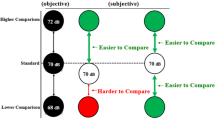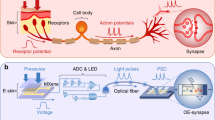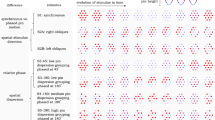Abstract
RECEPTOR units of the peripheral nervous system are distributed in space either compactly, as in the retina, or diffusely, as in the skin and musculature. From these units, afferent fibres enter, again more or less diffusely, a portion or portions of the central nervous system, and with their terminals define within the tissue a series of more-or-less sharply circumscribed volumes, with varying degrees of overlap, into each of which volumes the primary afferents of a sensory modulus come into contact with neurones of the second order. So far, then, we have a point-to-point or point-to-volume mapping of receptor units into a series of territories within the central nervous system1.
This is a preview of subscription content, access via your institution
Access options
Subscribe to this journal
Receive 51 print issues and online access
$199.00 per year
only $3.90 per issue
Buy this article
- Purchase on Springer Link
- Instant access to full article PDF
Prices may be subject to local taxes which are calculated during checkout
Similar content being viewed by others
References
Dodgson, M. C. H., The Growing Brain, 216 (John Wright, Bristol, 1962).
Braitenberg, V., Nature, 190, 539 (1961).
Hiller, L. A., and Isaacson, L. M., Experimental Music, 90 (McGraw-Hill Book Co., New York, Toronto and London, 1959).
Author information
Authors and Affiliations
Rights and permissions
About this article
Cite this article
DODGSON, M. Sensory Perception: Use of a Musical Notation. Nature 196, 698–699 (1962). https://doi.org/10.1038/196698a0
Issue Date:
DOI: https://doi.org/10.1038/196698a0
Comments
By submitting a comment you agree to abide by our Terms and Community Guidelines. If you find something abusive or that does not comply with our terms or guidelines please flag it as inappropriate.



